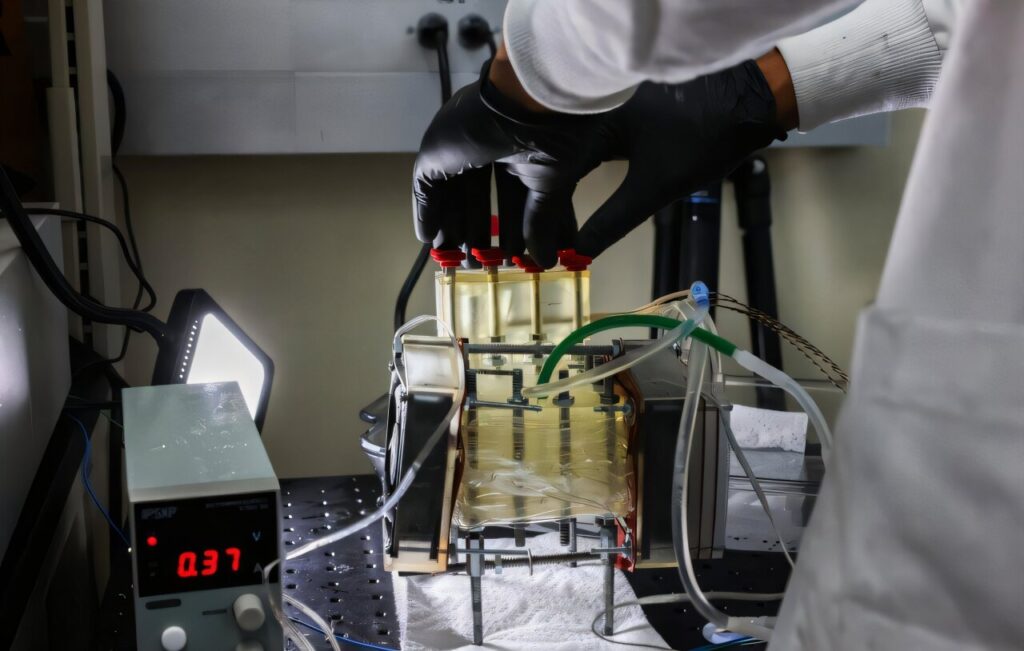The idea of turning the air around us into drinking water is a marvel on its own. And grabbing a sustainable amount of it from low-humidity environments has long been closer to science fiction than reality.
As a megadrought stresses the water supply throughout the Southwest, revolutionary research out of UNLV is answering this problem with a groundbreaking technology that pulls large amounts of water from the air in low humidity.
The research, “High-yield atmospheric water capture via bioinspired material segregation,” was published Oct. 22 in the journal Proceedings of the National Academy of Sciences.
UNLV mechanical engineering professor H. Jeremy Cho leads a team of researchers with a radically different approach to atmospheric water harvesting, or transforming water vapor in the air around us into a usable form. Existing atmospheric water harvesting approaches have low yields and diminishing returns below 30% humidity.
“This paper really establishes that you can capture water at a very fast rate,” said Cho. “We can start to forecast how big of a system we would need to produce a set amount of water. If I have one square meter, which is around three feet by three feet, we can generate about a gallon of water per day in Las Vegas, and up to three times more in humid environments.”
This technology and approach has been tested outdoors in Las Vegas, and is effective down to 10% humidity. It directly captures water in a liquid salt solution that is suitable for subsequent processing into drinking water or energy production, enabling new capabilities for arid regions.
A key ingredient in the process is a hydrogel membrane “skin.” The inspiration for this material comes from nature—specifically tree frogs and air plants, which use a similar technique to transport water from ambient air into a liquid for internal storage.
“We took that biological idea and tried to do it in our own way,” he said. “There are so many cool things happening in nature—you just have to look around, learn, and be inspired.”
Additionally, the research demonstrates that atmospheric water harvesting can be solar-powered. Thanks to the frequent sunlight experienced in places such as the Las Vegas Valley—which averages 300 sunny days a year, sunlight can provide enough energy to reduce the theoretical and eventual cost for generating water.
“Our water resources are depleting and our planet’s climate is changing,” said Cho. “To reach sustainability, we have to change our habits. This whole idea seemed like science fiction, but this is possible, and we’re actually doing it.”
More information:
Yiwei Gao et al, High-yield atmospheric water capture via bioinspired material segregation, Proceedings of the National Academy of Sciences (2024). DOI: 10.1073/pnas.2321429121
Citation:
Engineers invent high-yield atmospheric water capture device for arid regions (2024, October 25)
retrieved 25 October 2024
from https://techxplore.com/news/2024-10-high-yield-atmospheric-capture-device.html
This document is subject to copyright. Apart from any fair dealing for the purpose of private study or research, no
part may be reproduced without the written permission. The content is provided for information purposes only.
